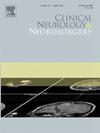急性卒中患者左心室射血分数降低与功能预后的关系:系统回顾和荟萃分析
IF 1.8
4区 医学
Q3 CLINICAL NEUROLOGY
引用次数: 0
摘要
导言左心室射血分数(LVEF)是衡量心脏功能的指标,LVEF 降低通常表示心肌病/心力衰竭。本研究评估了 LVEF 降低是否与急性中风的不良预后和死亡率有关。方法在以下数据库中检索了比较急性缺血性中风 LVEF 降低者与 LVEF 保持者的不良预后(修正的 Rankin 评分 3-6)或死亡率的文章:MEDLINE/PubMed、Embase、Scopus、Biomed central 和 Cochrane Library。最后一次检索是在 2024 年 3 月 17 日。结果 17 篇文章共纳入 28933 名参与者。左心室射血分数降低与 90 天后的不良预后独立相关(OR:2.38 CI95 % 1.52;3.71;I² = 71 %),90 天后的死亡也是如此(OR:3.15 CI 95 % 1.43;6.96;I² = 60 %)。本文章由计算机程序翻译,如有差异,请以英文原文为准。
Association between reduced left ventricular ejection fraction and functional outcomes in acute stroke: Systematic review and meta-analysis
Introduction
Left ventricular ejection fraction (LVEF) is a measure of cardiac function and often reduced LVEF is indicative of cardiomyopathy/heart failure. The current study evaluated whether reduced LVEF is associated with poor outcomes and mortality in acute stroke.
Methods
Articles that compared poor outcomes (modified Rankin scale 3–6) or mortality in people with reduced LVEF compared to preserved LVEF in acute ischemic stroke were searched in the following databases: MEDLINE/PubMed, Embase, Scopus, Biomed central, and Cochrane Library. The last search was on March 17, 2024. The results obtained were pooled in meta-analyses.
Results
A total of 28933 participants were enrolled from 17 articles. Reduced left ventricular ejection fraction was independently associated with poor outcomes at 90 days (OR:2.38 CI95 % 1.52;3.71; I² = 71 %), the same was observed for death at 90 days (OR:3.15 CI 95 % 1.43; 6.96; I² = 60 %).
Conclusion
Reduced LVEF is associated with poor functional outcomes and death within 3 months after acute ischemic stroke compared to the setting in which LVEF is preserved.
求助全文
通过发布文献求助,成功后即可免费获取论文全文。
去求助
来源期刊

Clinical Neurology and Neurosurgery
医学-临床神经学
CiteScore
3.70
自引率
5.30%
发文量
358
审稿时长
46 days
期刊介绍:
Clinical Neurology and Neurosurgery is devoted to publishing papers and reports on the clinical aspects of neurology and neurosurgery. It is an international forum for papers of high scientific standard that are of interest to Neurologists and Neurosurgeons world-wide.
 求助内容:
求助内容: 应助结果提醒方式:
应助结果提醒方式:


